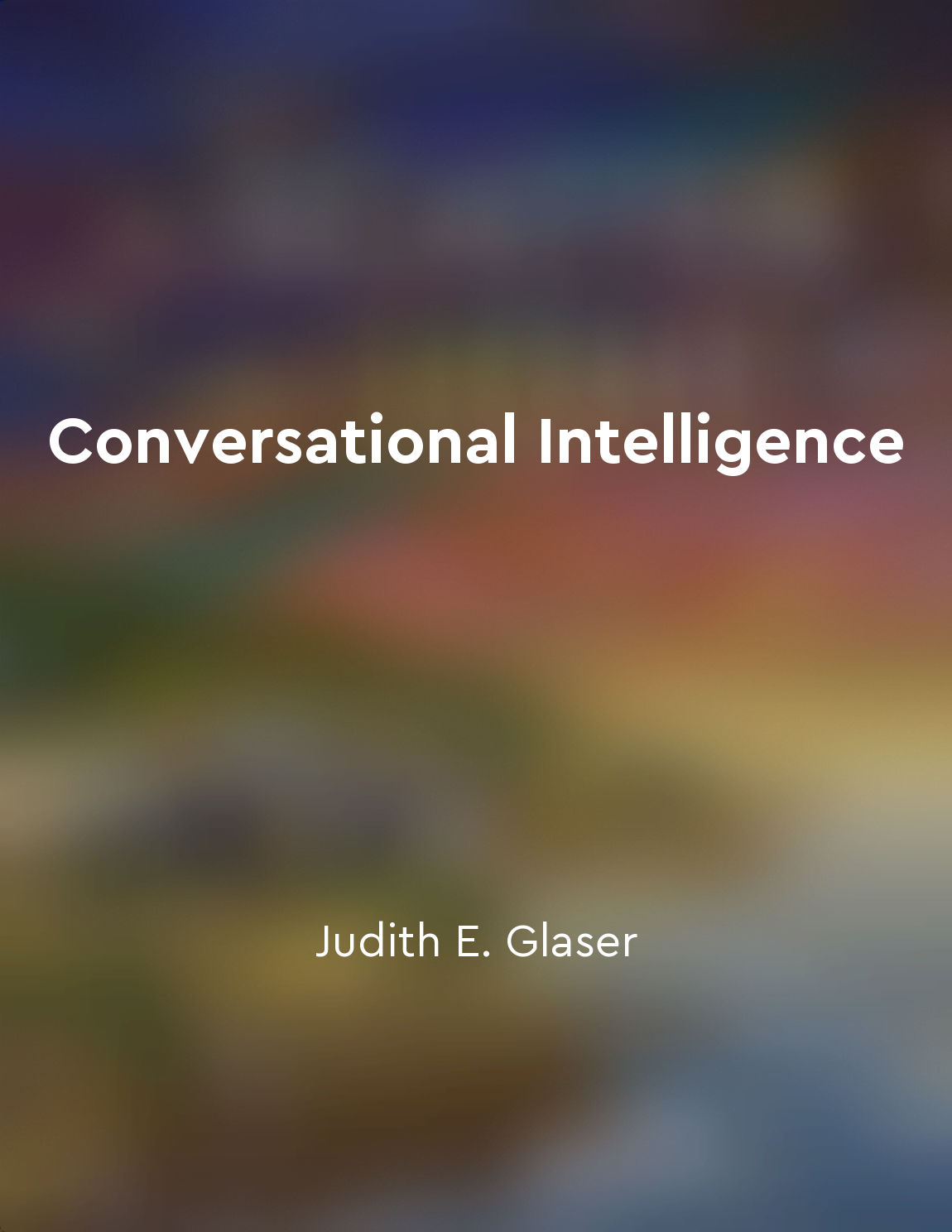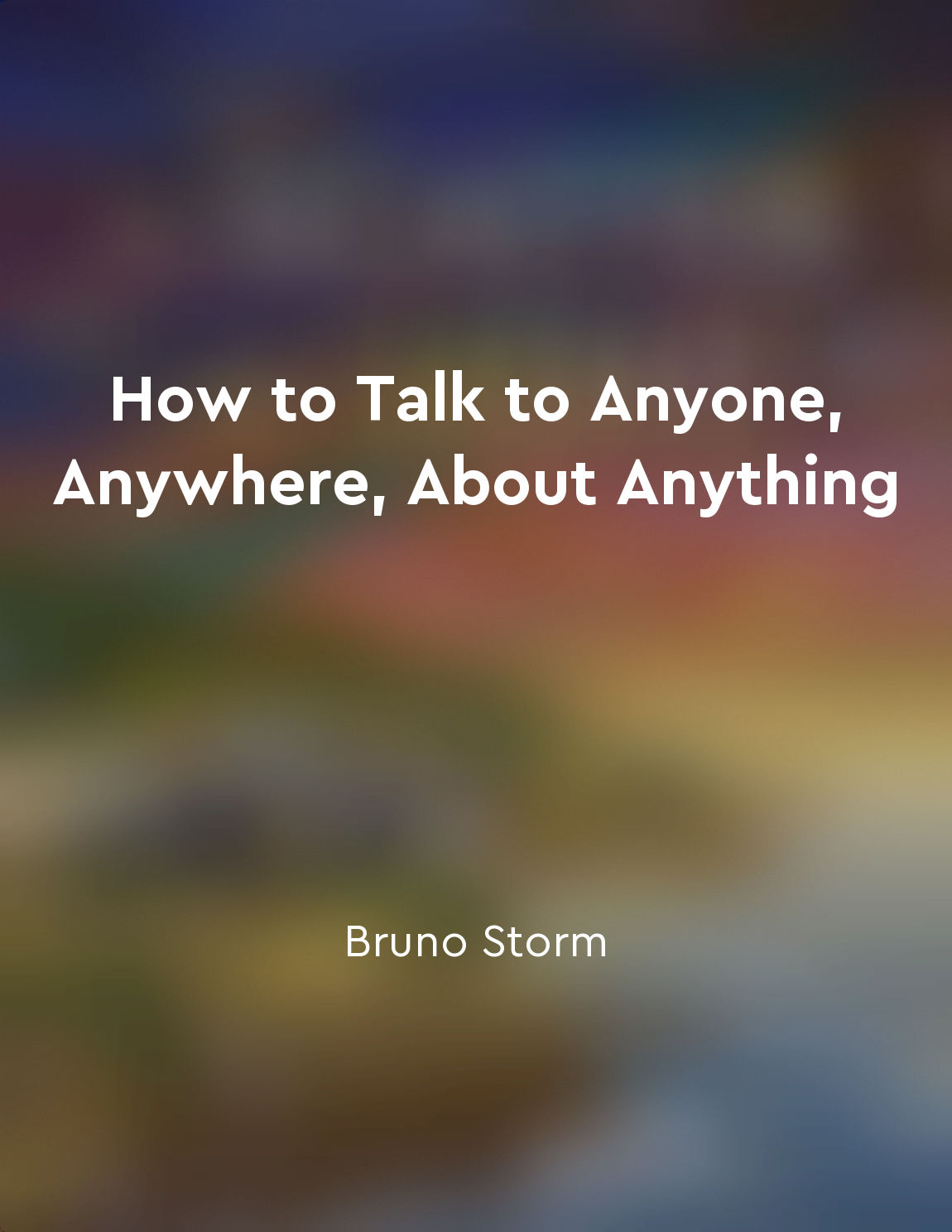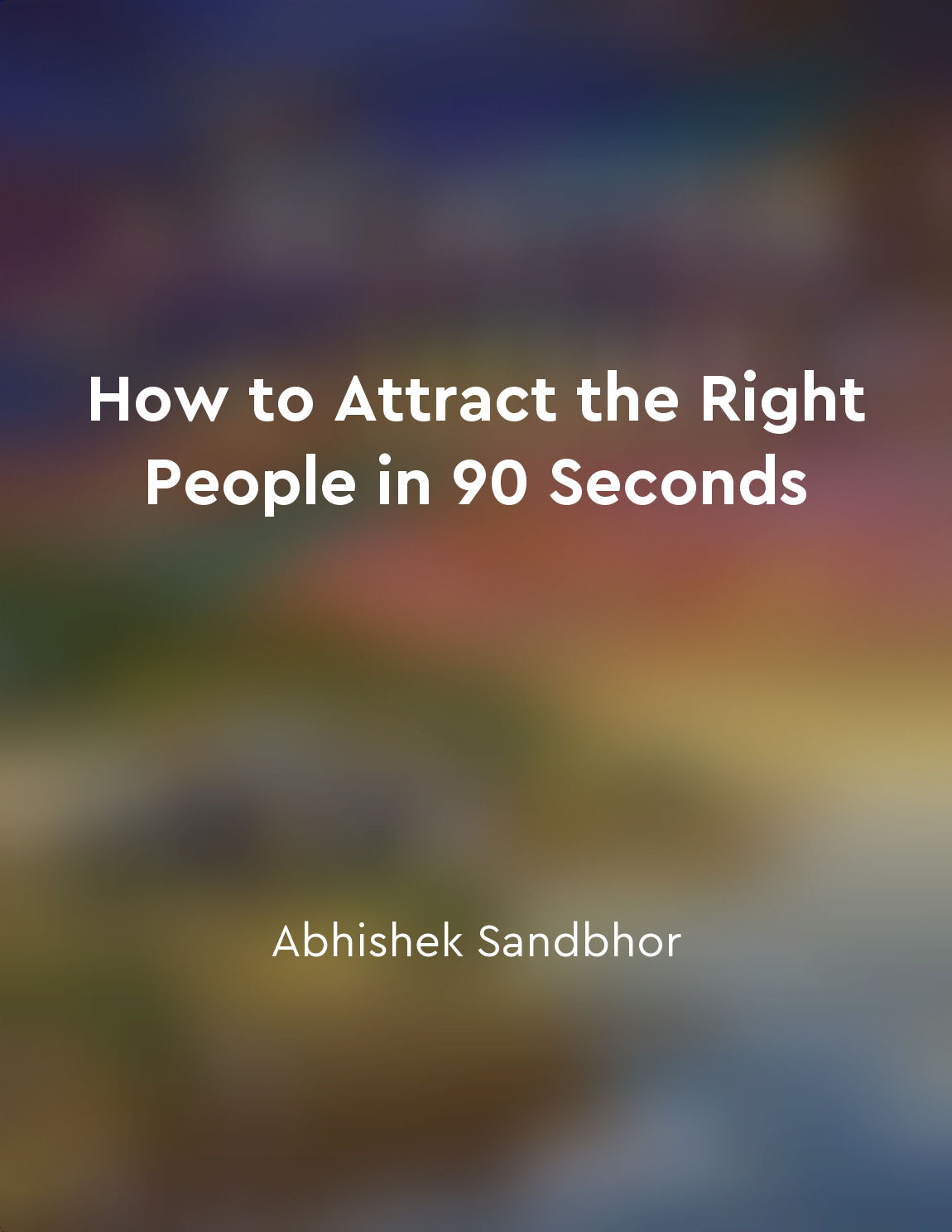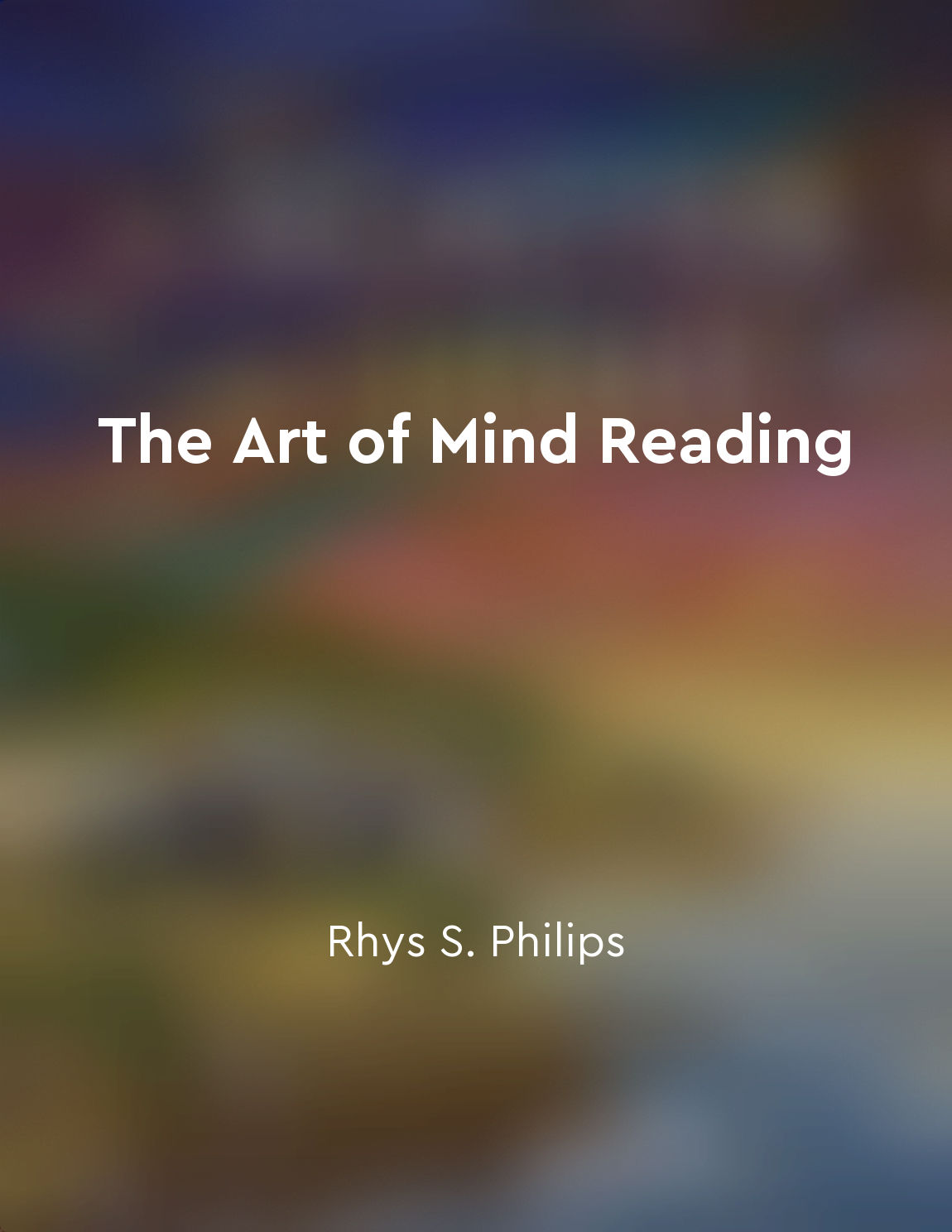Paying attention to visual cues can enhance your mind reading skills from "summary" of The Art of Mind Reading by Rhys S. Philips
Paying attention to visual cues is a crucial aspect of mastering the art of mind reading. This skill involves observing body language, facial expressions, and other non-verbal signals that can provide valuable insights into a person's thoughts and emotions. By honing your ability to interpret these visual cues, you can significantly enhance your mind reading skills. Body language is a powerful tool for deciphering what someone is really thinking or feeling. For example, crossed arms may indicate defensiveness or discomfort, while leaning in can suggest interest or engagement. Similarly, facial expressions such as raised eyebrows, narrowed eyes, or a tight-lipped smile can offer clues about a person's true feelings. In addition to body language and facial expressions, paying attention to a person's overall demeanor can also be instructive. Factors such as posture, gestures, and even the tone of voice can all serve as valuable sources of information when attempting to read someone's mind. By observing these visual cues in combination, you can gain a more comprehensive understanding of a person's inner thoughts and emotions. Furthermore, it is essential to consider the context in which these visual cues are being displayed. A particular gesture or expression may have different meanings depending on the situation or cultural background of the individual. Therefore, it is important to take into account the broader context in which these cues are occurring in order to accurately interpret them.- Mastering the art of mind reading requires a keen eye for visual cues. By paying close attention to body language, facial expressions, and overall demeanor, you can enhance your ability to understand and empathize with others on a deeper level. This skill is not only valuable in personal relationships but can also be a useful tool in professional settings such as negotiations, interviews, and leadership roles.
Similar Posts
People project their own insecurities onto others
When we are feeling insecure or inadequate in some way, we often seek to alleviate those feelings by projecting them onto other...
Build trust through genuine interactions
The key to building trust lies in the authenticity of our interactions with others. Genuine interactions create a strong founda...
Cultivate a magnetism that draws people towards you naturally
Developing an irresistible charm that effortlessly attracts others is a skill that can be cultivated and honed over time. One w...

Strive for mutual understanding and respect in interactions
To truly connect with others and build strong relationships, it is essential to approach interactions with a genuine desire to ...

Practice active listening to show respect for others' perspectives
When engaging in conversation with others, it is crucial to remember that communication is a two-way street. It is not just abo...
Help others find solutions through questioning
When someone comes to you with a problem, your first instinct might be to offer solutions right away. But what if I told you th...
Share your knowledge with others
The key to becoming a master at mind-reading card tricks is to share your knowledge with others. By teaching others the secrets...

Flexibility in communication styles is beneficial
Flexibility in communication styles can greatly enhance the effectiveness of our interactions with others. By being able to ada...
Maintain a strong presence on stage to hold your audience's attention
To captivate your audience and keep them engaged throughout your speech, it is essential to maintain a powerful presence on sta...

Find common ground and build rapport
To truly connect with others, it is essential to find common ground and establish a strong rapport. This means finding shared i...


